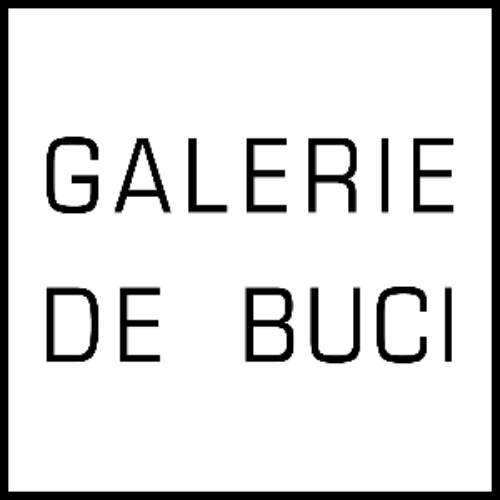Six Voices in Contemporary Sculpture
Highlighting Six Contemporary Sculptors You Should Know About
Detail of a Jaume Plensa Sculpture
Photo: Wikimedia Commons
Nina Khemchyan's current exhibition at the Galerie de Buci brings sculpture back to our gallery's spaces. To honor this incredible medium, today we are highlighting six contemporary artists that use sculpture in their creation, to get an overview of the different practices shopping the discipline.
In an art world increasingly dominated by digital formats and fleeting image consumption, sculpture asserts its enduring power through material presence. This article presents six contemporary artists—Anita Molinero, Laure Prouvost, Charles Ray, Otobong Nkanga, Jaume Plensa, and Nina Khemchyan—whose practices reveal the range, relevance, and radical potential of sculptural work today. Though wildly different in form and context, each artist uses sculpture to ask urgent questions about time, space, identity, and the body.
Anita Molinero
French artist Anita Molinero is known for her aggressive, visceral use of industrial materials—particularly melted plastic, foam, and urban detritus. Her sculptures often appear as if they’ve survived an explosion, occupying space with a wild, unstable energy. Molinero rejects polish in favor of rawness, allowing the violence of transformation to remain visible. Molinero often works with large plastic objects found in urban environments—such as street trash bins—which she melts, deforms, and reconfigures through the direct application of heat. By modifying and altering the physical state of these everyday materials, she believes that new meanings can emerge, drawn from the tension between form and collapse, familiarity and distortion. This approach makes her work feel urgent and physical, challenging the viewer’s expectations of sculpture as either monumental or refined. In using trash and industrial residue, Molinero forces a confrontation with the material excess of contemporary life, while simultaneously pushing the boundaries of what sculpture can be.

Portrait of Anita Molinero
Photo: Camille Gouget
Photo: Camille Gouget
Laure Prouvost
Winner of the Turner Prize in 2013, Laure Prouvost is known for creating immersive sculptural installations that dissolve the boundaries between fiction, language, and physical form. Her work frequently operates in a dreamlike register, blending humor with disorientation and sensuality with confusion. . The viewer is drawn into environments that feel at once chaotic and tender, where everyday materials take on symbolic resonance. Her sculptural objects are rarely stand-alone—they exist within carefully orchestrated spaces where everything contributes to a larger atmosphere of storytelling. Often hand-crafted or deliberately rough, these objects resist the sterile finish of digital art, favoring instead a tactile immediacy that invites emotional vulnerability. Her use of physical fragments—broken teacups, tangled cables, melted signage—creates a poetic archaeology of daily life. Prouvost’s work challenges traditional sculptural hierarchies and expands the medium into a layered, experiential terrain where narrative, sensation, and materiality converge.

Laure Prouvost – « Mère We Sea » à la Vieille Charité, Marseille
Photo: En Revenant de l'Expo
Photo: En Revenant de l'Expo
Charles Ray
American sculptor Charles Ray occupies a singular place in contemporary sculpture. Positioned between realism and stylization, his work often explores the relationship between representation, scale, and the status of the individual. Ray’s sculptures are frequently life-sized or just slightly off-scale, and invoke a double-take from viewers. At first glance, they may appear hyper-realistic or even classical, but upon closer inspection, a strange defamiliarization sets in: a misaligned gaze, a fading vein, or an ambiguous gesture. These subtle shifts destabilize perception, transforming familiar subjects, often anonymous human figures or mundane objects, into contemplative enigmas. Stripped of narrative, context, or overt symbolism, Ray’s sculptures stand in a space of ambiguity that challenges the viewer’s expectations. This effect is heightened by his obsessive attention to material and process. Whether working in stainless steel, aluminum, fiberglass, cement, or paper, Ray masterfully integrates traditional craftsmanship with advanced industrial technologies. . His practice emphasizes sculpture not just as form or representation, but as a mode of thinking: a spatial and perceptual tool that momentarily alters the stability of the real.

Charles Ray's "Horse and Rider," in front of the Bourse de Commerce in Paris
Photo: Pablo Monfort
Photo: Pablo Monfort
Otobong Nkanga
Otobong Nkanga, originally from Nigeria but now based in Belgium, approaches sculpture as a discursive and material strategy for exploring the entanglements of identity, land, and power. While her broader practice spans drawing, photography, installation, and performance, sculpture plays a key role in grounding these inquiries in tangible form. Her sculptural works often integrate organic and mineral components—soap, stone, mica, soil—and are configured as part of larger systems that invite reflection on extraction, labor, and the transformation of natural resources. Sculpture, for Nkanga, is not static. It is a narrative device and a spatial proposition. She often creates modular works that can be rearranged, walked through, or physically activated, emphasizing the evolving relationship between object, viewer, and environment. Her use of sculptural installation interrogates the systems through which raw materials are extracted, processed, and commodified globally, making visible the unseen flows that connect bodies to land and desire to consumption. By charting these invisible circuits through physical form, Nkanga reclaims sculpture as a vehicle for both critique and reparation.

View of the installation "Cadence" at the MoMA, 2025
Photo: Pablo Monfort
Photo: Pablo Monfort
Jaume Plensa
Spanish artist Jaume Plensa is best known for his monumental sculptures of human heads and figures, often placed in public spaces around the world. Working primarily in materials like steel, glass, resin, and light, Plensa seeks to create works that evoke universal human experiences: silence, introspection, connection. His sculptures range dramatically in size—from monumental public installations over ten meters high to more intimate works scaled for interior spaces—yet always maintain a commanding presence. Plensa approaches each piece with an architectural sensitivity to scale and site, often adapting the form to the specific surroundings and light conditions. His inspiration draws heavily from literature, philosophy, and music, which he translates into sculptural language using a palette of durable yet ethereal materials. The interplay between mass and immateriality is central to his practice: solid forms are often pierced with light or text, creating porous, meditative volumes that invite both physical and emotional engagement. His sculptures do not dominate; they resonate, acting as visual anchors for collective experience and personal reflection. They frequently use text—drawn from literature, poetry, or multiple languages—cut into the body of the form, suggesting that identity is shaped by words, culture, and memory. Despite their scale, Plensa’s works are remarkably quiet, inviting a reflective gaze. His vision of sculpture as a tool for emotional and spiritual connection situates his practice within both civic and personal dimensions.

"Julia" by Jaume Plensa
Photo: Javier Perez Montes
Photo: Javier Perez Montes
Nina Khemchyan
Nina Khemchyan’s sculptural practice is rooted in a language of intimacy, repetition, and ritual. Her medium of choice is chamotte clay, and her signature form is the sphere—a recurring object she has explored and refined for over thirty years. These closed ceramic volumes act as containers of silence and meaning, often engraved with abstracted symbols, faces with closed eyes, or gestural outlines of hands and limbs. Each piece is shaped entirely by hand, allowing traces of the artist’s touch, imperfections, and the physical memory of making to remain visible on the surface. Her process is slow and meditative, more akin to a rite than a technical production. Inspired by Armenian heritage, Eastern iconography, and the symbolic potential of sacred craft, Khemchyan turns sculpture into a spiritual practice. Far from being monumental in scale, her works are intimate and self-contained, yet they radiate an internal force that invites contemplation. They do not announce themselves loudly; they ask to be approached quietly and with care. The sphere, for Khemchyan, is not only a geometric form but a metaphysical proposition—a symbol of completeness, protection, and interiority. Her current exhibition Un Jour au Paradis at Galerie de Buci brought together a new constellation of these tactile objects, arranged to create a space of slowness and resonance.

Nina Khemchyan, L'Heure D'Or, 2025
Photo: Galerie de Buci
Photo: Galerie de Buci
Together, these six artists demonstrate the multiplicity of sculpture today—not only in terms of material and scale, but in how sculpture continues to function as a space for critical reflection, sensory engagement, and emotional resonance. Come to the Galerie de Buci to experience the power of sculpture through Nina Khemhchyan's spheric sculptures!

